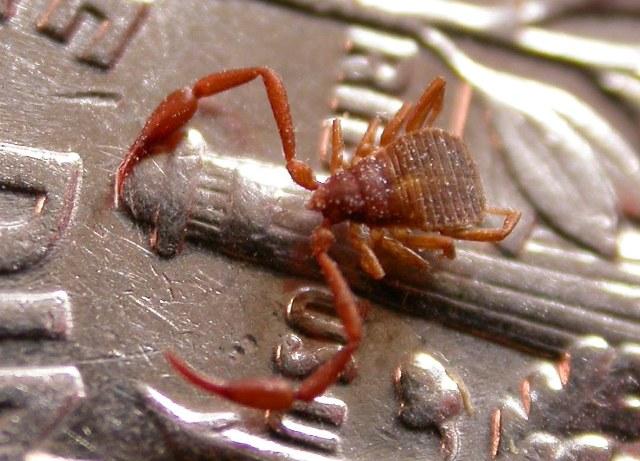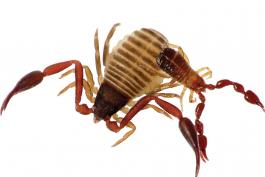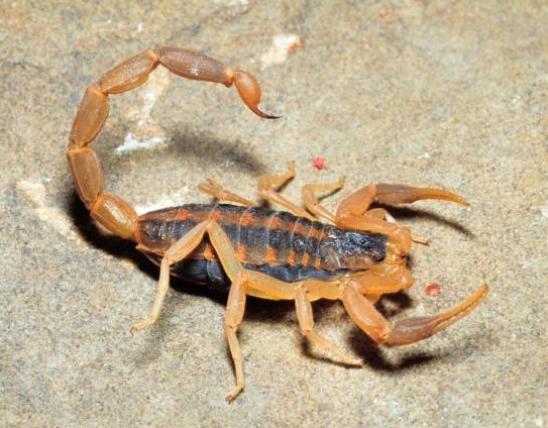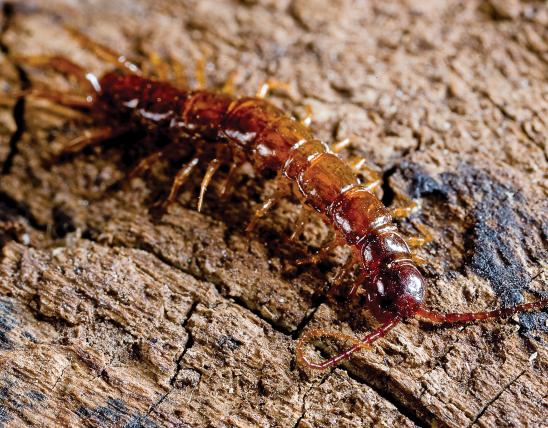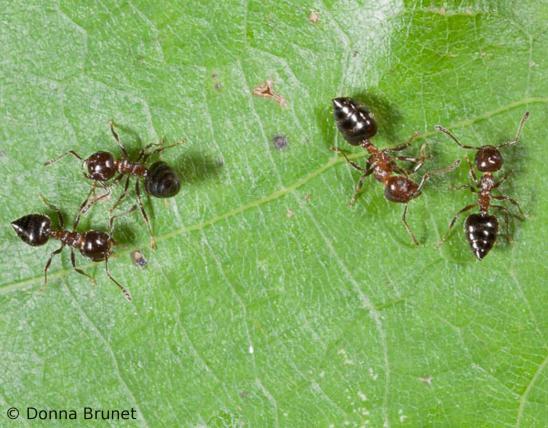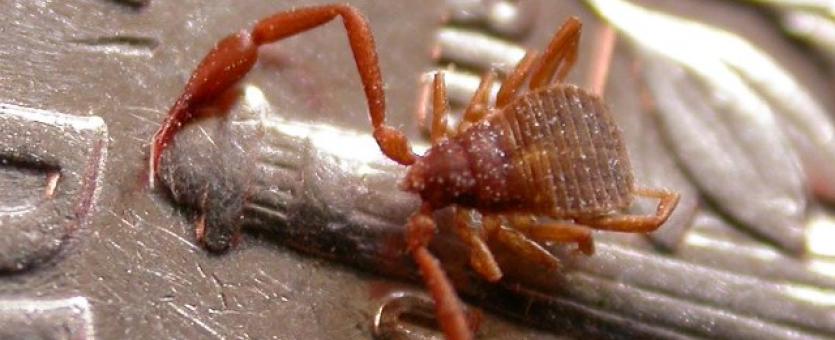
Pseudoscorpions are tiny creatures; the largest of them only reach about ¼ inch long. The body is flattened and teardrop- or pear-shaped. The tip of the abdomen is rounded (not elongated into a stinger like that of a true scorpion). There are 8 walking legs, plus 2 very long, armlike pedipalps ending in pincers, much like the pincers of a scorpion. Body color varies but is usually black, brown, tan, yellowish, or other muted colors. Some species lack eyes.
Length (not including legs): to ¼ inch.

Statewide, though seldom seen or noticed.
Habitat and Conservation
Pseudoscorpions, usually found in leaf litter, humus, behind bark, and under rocks, are a distinct order within the class Arachnida (arachnids). They occasionally are found in homes, where they arrive having hitched rides on houseflies and other flying insects. Some species live with mammals and birds, feeding on their lice and other parasites. They are often found in henhouses, where they feed on the lice chickens harbor.
Food
Pseudoscorpions prey on a number of small insects, mites, and larvae, which is why they sometimes survive in human homes — they eat booklice, clothes moths, dust mites, ants, and more. There is a tiny venom gland in their pincers that is used to subdue their minute prey (they are harmless to humans and are simply too small to bite us). Then, they secrete a digestive fluid onto the prey and ingest the dissolved remains.
Status
Various species are common throughout the state. Pseudoscorpions are in the class Arachnida (arachnids), along with spiders, mites and ticks, daddy longlegs, true scorpions, and others. These are all different orders of arachnids, just as the grasshoppers, beetles, butterflies, true bugs, and others are all different orders in the class Insecta (the insects).
Life Cycle
Pseudoscorpions are known for their elaborate mating displays that end in a ritual where both partners lock pincers and dance around until the male pulls the female over a packet of sperm he has deposited on their “dance floor.” The female carries the eggs and the hatched young on her body. When molting, many species spin a small silken cocoon for shelter during that vulnerable time. Depending on species, pseudoscorpions can live for several years and spend 2–3 years as mature adults.
Human Connections
Because they are harmless to humans, yet eat many pests such as the larvae of clothes moths and carpet beetles, plus ants, dust mites, small flies, and booklice, pseudoscorpions are considered beneficial to humans. Plus, they are just plain fascinating.
Ecosystem Connections
Food chains are better described as food webs, and pseudoscorpions fill an interesting position as a tiny predator of extremely minute insects and other invertebrates. In the world of mites and lice, pseudoscorpions are serious predators, but in the larger view, they are only foundational.
